Guidehouse
Fourteen Guidehouse experts hit their buzzers and answer our questions: Hector Artze, Dan Bradley, Michelle Fay, Lisa Frantzis, Nicole Reed Fry, Ben Grunfeld, Derek Jones, Robyn Link, Chris Luras, Macky McCleary, David O’Brien, Molly Podolefsky, Danielle Vitoff, and Ted Walker.
You have a short elevator ride alone with the chief executive of a major utility. What would you want to tell him or her?

Macky McCleary: Clean, affordable, reliable electricity is within our reach, but without significant upgrades to the electric distribution system, the affordable and reliable goals will get further and further from our grasp. Integrating intermittent clean-energy sources into our existing generation fleet will require a more complex and flexible control system than is our current infrastructure.
Our current electric distribution system was built for the previous century. It is aging, expensive, and built for one-way power flow. Grid animation to flatten out demand curves will drive significant savings for ratepayers, but it's hard to fix the plane as we are flying it.
Regulators (Public Utility Commissions, ratepayer advocates, etc.), utilities, product manufacturers, and telecommunications companies are uncomfortable bedfellows, and a fractured regulatory environment makes this a challenging space for systemic change.
Nonetheless, systemic change is certain to occur. We are in the midst of the largest investment in infrastructure in two generations. The time is now for utilities to seize the day and invest in new services, and new relationships with customers and communities.
 Macky McCleary: Clean, affordable, reliable electricity is within our reach, but without significant upgrades to the electric distribution system, the affordable and reliable goals will get further and further from our grasp.
Macky McCleary: Clean, affordable, reliable electricity is within our reach, but without significant upgrades to the electric distribution system, the affordable and reliable goals will get further and further from our grasp.
The breadth of the Bipartisan Infrastructure Law — from broadband to electric vehicles — presents an enormous opportunity for public good, which is why utilities were created in the first place.
The utility's customer relationship continues to evolve. What innovative approaches and programs are you seeing emerge across the utility landscape? How are utilities moving beyond the customer (and including the broader community) to facilitate a fair energy transition?
Robyn Link: Utilities are positioned to be the orchestrator for change, bringing their customers together to achieve improved and more equitable outcomes, but they cannot do this alone. For their part, utilities are building next-generation solutions to facilitate a fair energy transition through several key efforts:
Personalized digital customer experiences to both guide and engage customers on their energy use, taking advantage of increased data availability and advanced analytics solutions;
Comprehensive program aggregation strategies are increasingly leveraged to merge energy efficiency (EE) and distributed energy resource (DER) programs that maximize operational and systems benefits while giving customers cleaner energy choices;
 Robyn Link: Utilities are positioned to be the orchestrator for change, bringing their customers together to achieve improved and more equitable outcomes, but they cannot do this alone.
Robyn Link: Utilities are positioned to be the orchestrator for change, bringing their customers together to achieve improved and more equitable outcomes, but they cannot do this alone.
Market-based pay for performance approaches designed to promote innovative projects are being used to offset the saturation of traditional programs and lagging cost-effectiveness;
Fuel switching pilots for hydrogen — driven by DER maturity and regulatory emphasis on decarbonization — are increasingly coupled with customer-centric strategies and high-touch customer engagement to balance the energy transition; and
Utilities should also rely on their relationships with partners — vendors, customers and their communities, and state and local governments — to create programs that accelerate decarbonization and energy equity goals.
For example, through stakeholder engagement, utilities are making programming more accessible through communities and equitable for customers. Utilities are also applying workforce development strategies to drive community and energy savings growth through career assistance and up/re-skilling for emerging green jobs. Climate change impacts are here, but so is the growth of flexible, resilient, and low-carbon grids capable of delivering more affordable, equitable, and reliable power.
Absent regulatory requirements, what immediate steps can utilities take to become Environmental, Social, and Governance (ESG) leaders in the power industry? How can the industry more effectively meet evolving societal, shareholder, and board expectations?
 Molly Podolefsky: Regulatory requirements by the U.S. Securities and Exchange Commission, still undergoing public comment, signal that ESG has moved from the periphery to mainstream corporate practice.
Molly Podolefsky: Regulatory requirements by the U.S. Securities and Exchange Commission, still undergoing public comment, signal that ESG has moved from the periphery to mainstream corporate practice.
Molly Podolefsky: Regulatory requirements by the U.S. Securities and Exchange Commission, still undergoing public comment, signal that ESG has moved from the periphery to mainstream corporate practice. Absent regulatory requirements, the underlying imperatives are immediate and serious enough to warrant priority attention and action by utilities.
As the incidence of climate-related disasters and market disruptions accelerates, society looks to utilities for leadership, increasingly holding them accountable for either compounding or mitigating these threats. Utilities can lead the charge in combating climate change, stabilizing markets, and protecting society, thereby meeting evolving stakeholder expectations, while at the same time maximizing shareholder value and capturing upside from the energy transition.
But first, utilities must evolve beyond a compliance and risk avoidance-based approach to ESG, instead embracing ESG as a tool for value creation. This means engaging the full spectrum of internal and external stakeholders in a thorough materiality assessment, identifying risks, and highlighting opportunities for change, constructing, and implementing a comprehensive ESG strategy, and reporting on goals and achievements through annual ESG reporting.
By leveraging ESG reporting as an opportunity to control their sustainability narrative, public utilities can positively affect internal and external stakeholder perceptions and understanding of their role as good stewards and responsible partners driving social and environmental good.
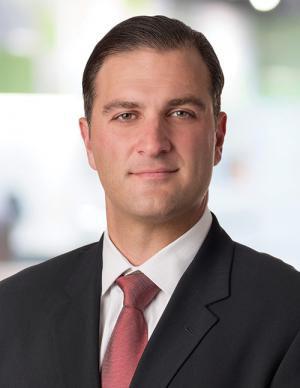 Chris Luras: Have a crisis communication plan: Review and enhance your Incident Response and Crisis Management capabilities, recovery and communications plans, and contact lists. Open clear escalation channels to high-risk areas of the business to establish a rapid-response capability.
Chris Luras: Have a crisis communication plan: Review and enhance your Incident Response and Crisis Management capabilities, recovery and communications plans, and contact lists. Open clear escalation channels to high-risk areas of the business to establish a rapid-response capability.
Second, utilities must move urgently to understand, control, and report on their Scope 3 (upstream and downstream) emissions. Public utilities must put processes and systems in place to track these emissions effectively, and to monitor and report on improvements. Utilities must start engaging with their supply chain in a meaningful way in order to create the leverage they will need to reduce upstream emissions in the future.
Finally, utilities should educate their boards and executive leadership about ESG topics and set up good governance. Boards should receive regular updates on material ESG issues throughout the year and be charged with approving the utility's annual ESG report. Utilities should also form an ESG committee responsible for fostering ESG awareness throughout the firm and supporting operating units and management teams in achieving their ESG goals.
Cybersecurity threats to the grid have increased substantially in recent months. What should utilities do to protect information technology (IT)/operational technology (OT) systems and digitally enabled physical infrastructure?
Chris Luras: Given the recent rise in threats and cyberattacks to the U.S. electric grid, utility leaders should take the following actions:
Play defense: Validate and fortify the security of your perimeter defenses. Boundary protection for OT systems, specifically substations, typically composed of firewalls, anti-virus and intrusion detection/protection systems (IDS/IPS).
 Danielle Vitoff: As the energy system decarbonizes, we will see a sustained move away from fossil fuels, which raises the question: What will happen to businesses like gas utilities that are built to deliver fossil fuels?
Danielle Vitoff: As the energy system decarbonizes, we will see a sustained move away from fossil fuels, which raises the question: What will happen to businesses like gas utilities that are built to deliver fossil fuels?
However, utilizing Software Defined Networks (SDN) focusing on the OpenFlow 1.3 standard, allow for specific ingress/egress communications on network layers 1 through 4. When used with traditional firewalls, SDN replaces the switch inside critical networks and can provide specific ports/protocols to specific physical ports, allowing for only the network traffic designed into the substation.
This removes the need for virtual local area networks (LANs) by segregating layer 2 traffic, limits network traffic to only authorized communications, and provides added benefits such as allowing all unknown traffic to be directed to a separate physical port for inspection by and IDS/IPS.
Since substations are static, with few changes, SDNs provide the known traffic communications needed and expected within a substation, thus increasing the security within and between devices on critical OT networks.
Take inventory: Assess, validate, and ensure accurate inventories of key assets (staff, applications, data, vendors, etc.) and critical points of failure, and review maximum allowable downtime estimates to manage risk exposure. Importantly, ensure segregation of operational technology from your mission-critical IT systems and data resources from the rest of the organization.
 Hector Artze: A growing number of institutional investors, state utility regulators, and the SEC are bringing focus to climate-related risk reporting.
Hector Artze: A growing number of institutional investors, state utility regulators, and the SEC are bringing focus to climate-related risk reporting.
Plan ahead: Run scenario-based simulation tests to prepare and identify any gaps in your security and resiliency plans.
Engage stakeholders: Meet with key suppliers to understand their level of vulnerability to supply chain, communication, and energy disruptions.
Have a crisis communication plan: Review and enhance your Incident Response and Crisis Management capabilities, recovery and communications plans, and contact lists. Open clear escalation channels to high-risk areas of the business to establish a rapid-response capability.
Review third-party agreements: Review and confirm agreements for your third-party incident response support by asking questions such as: Is your organization guaranteed priority support in the event of widespread problems? Is this documented in your service-level agreements? Do you have a backup, or alternate, provider?
 Dan Bradley: Decarbonization is an economic imperative for multinational corporations. Of the Fortune Global 500 companies that have combined revenues of thirty-two trillion and employ seven million people around the world, nearly four in ten have delivered a significant climate milestone or are publicly committed to do so by 2030 and that is increasing each year.
Dan Bradley: Decarbonization is an economic imperative for multinational corporations. Of the Fortune Global 500 companies that have combined revenues of thirty-two trillion and employ seven million people around the world, nearly four in ten have delivered a significant climate milestone or are publicly committed to do so by 2030 and that is increasing each year.
Implement security framework best practices: Finally, implement security best practices and guidance provided by security frameworks such as ISO-27001 and NIST 800-53/800-171.
How can gas utilities preserve their business value as society transitions from fossil fuels? What role can hydrogen play in diversifying the natural gas business case?
Danielle Vitoff: As the energy system decarbonizes, we will see a sustained move away from fossil fuels, which raises the question: What will happen to businesses like gas utilities that are built to deliver fossil fuels?
The answer for gas utilities and the gas system as a whole requires understanding that the gas system infrastructure is different from the molecules that flow through it. Gas utilities currently own an incredibly effective and resilient energy delivery system, one that provides redundancy to the current electric system and is critically important when it comes to ensuring continued energy service through extreme weather events.
In fact, as we highlighted in our work with the American Gas Foundation, during the January 2019 Polar Vortex in the Midwest, the gas system in the Chicago area delivered three and a half times the amount of energy as was comparatively delivered by the electrical system in the same geographic area.
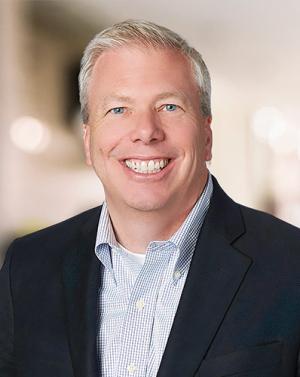 David O’Brien: When you think about it, innovation has always been a natural byproduct of competitive business. Innovate around your customer, bring them new technologies, new features, reinvent the vertical, all to create value for customers and shareholders. As the linchpin to success, innovation has been table stakes in competitive business.
David O’Brien: When you think about it, innovation has always been a natural byproduct of competitive business. Innovate around your customer, bring them new technologies, new features, reinvent the vertical, all to create value for customers and shareholders. As the linchpin to success, innovation has been table stakes in competitive business.
As we see increasing electrification and resulting load increases on our electric system, it is also unlikely that in just a few decades we will also be able to build enough new electricity infrastructure to replace energy delivery through the gas system during resilience events.
Currently, gas utilities are not explicitly remunerated for the insurance value that their systems provide, but perhaps they should be?
Following logical decarbonization pathways of the energy system through the mid-twenty-first century shows that gas systems will have significantly fewer therms moving through them, even as natural gas is replaced with low- and zero-carbon fuels, such as renewable natural gas and hydrogen.
Meanwhile, it will become increasingly important to have that gas available when it is needed, such as, in response to resilience events. Understanding the value for gas utilities and the gas system as a whole increasingly requires a vision for the implications of decarbonization and delivery across the entire energy system, taking a holistic view of what each portion of the energy system is best suited to deliver.
Climate change poses an unrelenting threat to physical assets and business continuity for utilities. What can utilities do to improve resilience in the next three years and increase business continuity readiness?
 Nicole Reed Fry: The Bipartisan Infrastructure Law funding presents a historic opportunity for utilities to upgrade infrastructure, advance climate initiatives, improve resiliency, and expand transportation electrification, while at the same time strengthening community partnerships and supporting underserved communities.
Nicole Reed Fry: The Bipartisan Infrastructure Law funding presents a historic opportunity for utilities to upgrade infrastructure, advance climate initiatives, improve resiliency, and expand transportation electrification, while at the same time strengthening community partnerships and supporting underserved communities.
Hector Artze: A growing number of institutional investors, state utility regulators, and the SEC are bringing focus to climate-related risk reporting. Utilities across the globe are coming to the realization that many recent extreme weather events exceeded all historical records, and that in certain regions the frequency of severe weather events is growing. Therefore, it is important to understand the threat climate change poses to their physical assets and financial performance.
Utilities should quantify their risks from extreme climate hazards by using downscaled stochastic climate models to understand acute physical risks such as extreme wind and flooding, and chronic risks such as extreme heat and cold, which have unique impacts on an asset's failure modes, and by using their asset data to understand the probability of failure and impact across the utility footprint and time.
By quantifying this risk, utilities can:
Substantiate and prioritize investments to improve system resilience and improve business continuity;
 Lisa Frantzis: Lithium-ion batteries are typically the storage technology being used for four to eight hours of storage, and the average pumped hydro system is roughly ten hours. Both are insufficient to solve multi-day reliability challenges alone.
Lisa Frantzis: Lithium-ion batteries are typically the storage technology being used for four to eight hours of storage, and the average pumped hydro system is roughly ten hours. Both are insufficient to solve multi-day reliability challenges alone.
Develop and implement resilience programs that mitigate both acute and chronic risk;
Integrate the results in their infrastructure planning processes, and in the development of future-proof standards; and
Be prepared to comply with climate-risk disclosure requirements.
We expect that utilities will incorporate climate change impact to inform their strategy, and to transform their planning and business processes.
 Derek Jones: Promoting energy independence, sustainability, and resilience through building and transportation electrification without impeding customer and societal objectives is paramount for utilities. There are abundant opportunities to unlock benefits and social equity for stakeholders through full-site conversion.
Derek Jones: Promoting energy independence, sustainability, and resilience through building and transportation electrification without impeding customer and societal objectives is paramount for utilities. There are abundant opportunities to unlock benefits and social equity for stakeholders through full-site conversion.
How can utilities partner with their customers to accelerate decarbonization initiatives? How have we seen utilities shifting more decarbonization choices to their clients?
Dan Bradley: Decarbonization is an economic imperative for multinational corporations. Of the Fortune Global 500 companies that have combined revenues of thirty-two trillion and employ seven million people around the world, nearly four in ten have delivered a significant climate milestone or are publicly committed to do so by 2030 and that is increasing each year.
Small and midsize businesses, communities, and cities are also committing to significant climate milestones. As the world moves toward a net-zero future, these utility customer segments are no longer asking if, when, or why to decarbonize. They want to know how to decarbonize now.
Today, leading utilities are ramping up energy efficiency and demand-side investments that are provided to customers through a growing number of programs. Utilities can improve the decarbonization choices to their customers by increasing the speed to market of customer-centric programs that are tailored to customers along with a modern customer experience.
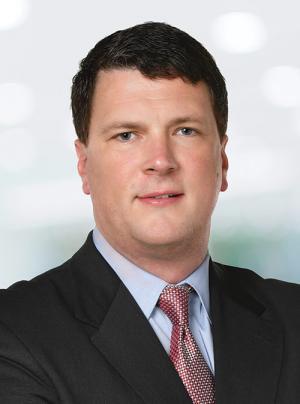 Ted Walker: Utilities are at the core of the clean-energy value chain and are well-positioned to own and optimize key parts of the emerging Energy Cloud. Utilities should embrace this role and drive collaboration with other players (as opposed to putting up walls to protect their franchise).
Ted Walker: Utilities are at the core of the clean-energy value chain and are well-positioned to own and optimize key parts of the emerging Energy Cloud. Utilities should embrace this role and drive collaboration with other players (as opposed to putting up walls to protect their franchise).
Sustainability as a Service (SaaS) is an example of one such commercial customer program. SaaS entails bundling products and services within the customer experience to provide bespoke decarbonization choices and the tools to measure the investment yield of the carbon savings.
Connected Communities is an example of a community or municipal program. Utility and community partnerships are the new channel to the mass market for decarbonization investments.
Community engagement can also be tailored to address disadvantaged communities, vulnerable populations, and social justice. The program connects customers' needs with products and services that address issues such as access, workforce development, resiliency, and air quality.
Looking ahead, we see utilities adapting their business model, organizations, and programs to better partner with customers to accelerate the speed and scale of investment in decarbonization measures.
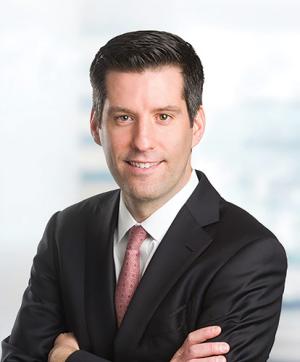 Ben Grunfeld: First and foremost, you are not alone in recognizing you don’t have all the answers or all the solutions in place. Less than forty percent of CEOs globally say they believe they are well-prepared to meet challenges posed by a major crisis related to inflation, cybersecurity, supply chain disruptions, or climate change. This is a shockingly low number.
Ben Grunfeld: First and foremost, you are not alone in recognizing you don’t have all the answers or all the solutions in place. Less than forty percent of CEOs globally say they believe they are well-prepared to meet challenges posed by a major crisis related to inflation, cybersecurity, supply chain disruptions, or climate change. This is a shockingly low number.
Regulatory constraints impede dynamic innovation, say utility executives. How can regulators support aggressive innovation and optimize outcomes for all?
David O'Brien: When you think about it, innovation has always been a natural byproduct of competitive business. Innovate around your customer, bring them new technologies, new features, reinvent the vertical, all to create value for customers and shareholders. As the linchpin to success, innovation has been table stakes in competitive business.
In the regulated utility industry, the emphasis has been on providing service. As a natural monopoly, the business model was built to ensure reliable service and fair treatment to all customers. It was built as a do-no-harm system; not one to foster creativity and innovation.
In 2022, the conditions have changed dramatically — customer expectations in the digital age are entirely different. The distributed energy system is upon us.
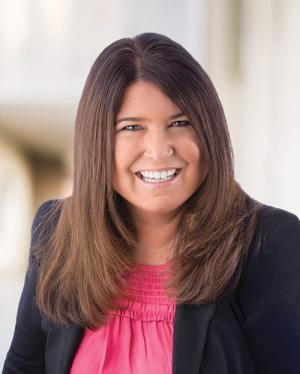 Michelle Fay: Ambitious net-zero goals at the state and federal levels, increased intensity and frequency of extreme weather events, and increased stakeholder pressures are requiring utilities to make more changes in the next eight years than they have in the past hundred.
Michelle Fay: Ambitious net-zero goals at the state and federal levels, increased intensity and frequency of extreme weather events, and increased stakeholder pressures are requiring utilities to make more changes in the next eight years than they have in the past hundred.
Regulators need to reimagine the regulatory system to provide the degrees of freedom in the process for utilities to innovate and offer a financial reward for bringing them to customers.
What can utilities do to position themselves to succeed and access funding under the bipartisan infrastructure law and related initiatives under the Biden administration?
Nicole Reed Fry: The Bipartisan Infrastructure Law (BIL) funding presents a historic opportunity for utilities to upgrade infrastructure, advance climate initiatives, improve resiliency, and expand transportation electrification, while at the same time strengthening community partnerships and supporting underserved communities.
Utilities can start by recognizing this transformational opportunity, devoting leadership and resources at the beginning, and examining the funding opportunities they may be well-positioned to pursue (both directly and through partnerships).
BIL funding program opportunities will likely range from those with clear alignment with existing or planned projects (where federal funding may help drive down costs to customers) to programs where federal funding can tip the scales to bring emergent projects to life, to funding that could accelerate entirely new, innovative programs that put utilities at the forefront of a cleaner and more resilient energy future.
Thinking strategically and proactively about BIL funding now — while conducting targeted outreach to potential partners such as state and local governments — can allow utilities to identify the high-value opportunities with shared interests and alignment that can enable utilities to take advantage of the historic opportunity in front of them.
What are the critical challenges utilities face in deploying long-duration storage and transmission and what critical actions should they take today to increase capacity for renewable integration?
Lisa Frantzis: Lithium-ion batteries are typically the storage technology being used for four to eight hours of storage, and the average pumped hydro system is roughly ten hours. Both are insufficient to solve multi-day reliability challenges alone.
Emerging technology options like iron-air (Form Energy one hundred hours-plus), hydrogen in salt caverns, or thermal storage using molten salt (Malta for ten to two hundred hours) hold promise to transform intermittent renewable energy to perform more like firm dispatchable assets to the grid.
Utilities must scale these newer technologies to drive down costs and provide proof points for more wide-scale deployment.
With transmission, utility companies are challenged by a lack of situational awareness on their lines, as well as the need for increased capacity for new renewable generation. Today, U.S. Energy Information Agency estimates that less than one percent of transmission lines globally are monitored and Lawrence Berkeley National Laboratory notes there are nearly a thousand Gigawatts of interconnection projects stuck in the queue.
Companies like LineVision help address these challenges as their non-contact sensor-based platform is able to equip grid operators with data on the performance of their transmission lines and unlock additional capacity through dynamic line ratings, enabling operators to reduce interconnection queues while also providing real-time system visibility.
Utility companies should deploy dynamic line-rating technology, as it is able to create additional capacity and enhance system resilience at a fraction of the cost of traditional projects without requiring time-consuming permitting processes.
What immediate actions can utilities take to unlock benefits and social equity for stakeholders from trends in electrification in transportation and buildings? What are utilities behind on or what bottlenecks will need to be overcome?
Derek Jones: Promoting energy independence, sustainability, and resilience through building and transportation electrification without impeding customer and societal objectives is paramount for utilities. There are abundant opportunities to unlock benefits and social equity for stakeholders through full-site conversion. Full-site strategies will address fleet, facility, and fuel conversion needs through a controlled, low-risk implementation platform.
If the platform addresses the four conversion priorities — acquisition, infrastructure, interoperability, and change management — utilities can avoid becoming a bottleneck in this transition. Proactive platform implementation can also provide an on-ramp to financial, operational, environmental, and equity benefits for utility stakeholders.
The biggest mindset shift for utilities is recognizing that the pace for this global transition is fueled by relentless innovators, aggressive non-utility-centric policy goals, and swelling capital market infusions — and they better keep up!
What role should utilities play in facilitating innovation from industry stakeholders, including oil & gas, automotive, tech, telecom, and others? What investments and programs should integrated planning prioritize to support?
Ted Walker: Utilities are at the core of the clean-energy value chain and are well-positioned to own and optimize key parts of the emerging Energy Cloud. Utilities should embrace this role and drive collaboration with other players (as opposed to putting up walls to protect their franchise).
New sustainability-focused customer solutions will require once-disparate industries to collaborate. For example, a regional transportation electrification initiative will have a much bigger impact if automotive manufacturers, traditional oil & gas players, governmental entities, major customers, and utilities all work together. A utility going it alone will likely have a much smaller impact.
Multi-decade planning horizons are nothing new to utilities, and a similar approach is needed to drive innovation. We see innovation investments in two categories:
Clean energy grid optimization — investments that make the T&D grid more resilient and robust, including DER integration, EV smart charging, climate resiliency, etc.; and
Clean energy ecosystem engagement — investments that facilitate innovation across the value chain, including market engagement programs, open innovation platforms, joint sustainability-as-a-service offerings, etc.
By taking a lift-all-boats approach, utilities can optimize the clean energy outcomes for all stakeholders, while optimizing their own bottom lines.
COVID and geopolitical events have heightened the risk calculus for global energy markets. How have these events changed risk management for utilities? What can utilities learn from other industries?
Ben Grunfeld: First and foremost, you are not alone in recognizing you don't have all the answers or all the solutions in place. Less than forty percent of CEOs globally say they believe they are well-prepared to meet challenges posed by a major crisis related to inflation, cybersecurity, supply chain disruptions, or climate change.
This is a shockingly low number, considering that in the past two years alone, extreme weather events, cyberterrorism, and COVID have forced companies to adapt in real time to what only recently had been largely hypothetical risks.
We recommend that companies across the energy, financial services, health, security, and defense sectors implement the following risk-management best practices:
Improve visibility and awareness: Identify essential business services and functions, measure impact, and identify acceptable disruption tolerances.
Strengthen business practices: Diversify risk and reduce single points of failure through digital transformation, process re-engineering, or capacity improvement.
Harden physical assets: Increase the resilience of physical assets through improvements in design standards, enhanced risk-mitigation measures, and threat detection and security controls.
Effective risk-management practices are essential to business resilience. In today's turbulent economic and geopolitically charged environment, strengthening business resiliency should be a priority for all leaders.
What will the utility of the future look like in 2030? How will it be different from today's utilities?
Michelle Fay: Ambitious net-zero goals at the state and federal levels, increased intensity and frequency of extreme weather events, and increased stakeholder pressures are requiring utilities to make more changes in the next eight years than they have in the past hundred.
The transition to a cleaner, more resilient grid is no longer a nice to have, but a must have, and utilities will need to accelerate the pace at which they adapt to these evolving conditions.
Accelerated penetration of DERs and beneficial electrification are causing changes to the traditional peak demand profiles and introducing large volumes of intermittent load. The complexity of managing this dynamic system requires an increasing dependency on technology to provide transparent and real-time analytical capabilities to forecast, manage, and optimize the resources and the system.
Utilities will no longer simply deliver a service. They will orchestrate a dynamic system that must respond to changes and demonstrate a nimbleness previously only expected from the technology sector.
To compete in this new world, utilities will need to put innovation at the core of their business. They will need to extend beyond the traditional energy efficiency, demand response, and smart grid programs, and quickly and effectively bring new technology and programs to scale. They will need to bring customers along on this transition — ensuring the programs are created and implemented in an inclusive and equitable manner to meet the needs of their diverse customer base.
---
Hector Artze is a Partner in Guidehouse's Energy, Sustainability, and Infrastructure. His professional career spans more than 30 years in the electrical utility and energy fields. Hector is the ES&I's global growth lead for energy transformation and infrastructure resiliency. He assists energy, utility, and public sector clients plan for the transition to Net-Zero carbon emissions; build infrastructure resiliency to mitigate the impact of natural disasters and climate change; modernize their utility systems; reduce the cost of operations and maintenance through process automation, optimization, and technology; and manage asset investments.
Dan Bradley has worked with clients to develop strategies, grow earnings, deliver outcomes, work with stakeholders and testify before regulatory commissions. Dan's most notable recent work centers on his role as director-in-charge of REV Connect, where he is helping the State of New York advance its Reforming the Energy Vision (REV) goals through a first-of-its-kind program that facilitates partnerships between innovative companies and utilities. REV Connect was named Utility Dive Project of the Year, and Dan was named a runner up for Public Utilities Fortnightly's Innovator of the Year awards for his role.
Michelle Fay is a partner in the Energy, Sustainability, and Infrastructure segment supporting clients as they implement transformational programs. She brings more than 20 years of experience planning and delivering complex and innovative programs for utilities. Michelle's expertise includes program and project management, organizational change management, account management, process and performance improvement, grid modernization, energy efficiency, analytics. She is an experienced leader specializing in emerging technologies and is respected for her integrity, leadership, team building, strategic planning, and laser-focused execution.
Lisa Frantzis is a partner in Guidehouse's Energy, Sustainability, and Infrastructure segment, responsible for decarbonization go-to-market initiatives such as clean hydrogen, e-mobility, and renewable energy solutions. Throughout her 40 years of consulting experience, she has determined clean energy integration options for utility companies; identified energy program options for international government agencies; developed business strategies for clean energy manufacturers; and conducted due diligence for financial firms considering clean energy investments. Most recently, she is leading Guidehouse's Hydrogen Consortium, Building the Clean Hydrogen Economy, with over 20 companies working together to create and launch innovative pilot projects/hubs that use clean hydrogen to decarbonize heavy transport, increase renewables integration, and decrease emissions in the U.S. energy sector.
Nicole Reed Fry is a Director in the Energy, Sustainability, and Infrastructure segment, focusing on strategy, planning, and evaluation for energy efficiency demand-side management and distributed energy resources. Nicole works with government, utility, and private sector clients, leading projects related to market transformation, impact and process evaluation, customer engagement, energy efficiency financing, and market strategy. Prior to joining Guidehouse, Nicole spent four years with the Office of Energy Efficiency and Renewable Energy at the U.S. Department of Energy, where she managed policy and programs focused on innovative energy efficiency initiatives.
Benjamin Grunfeld is a partner in the global Energy, Sustainability, and Infrastructure segment and the European and Middle Eastern utility and energy company sector leader. He is a trusted advisor to senior leaders across the entire energy sector value chain. Benjamin has considerable consulting project experience in the areas of strategy and operations, mergers and acquisitions, project development and finance, energy efficiency and demand-side management programming, regulatory economics, electricity market design and operations, and energy policy. He is a recognized expert on the energy sector globally and has served as an expert witness in regulatory and civil matters.
Derek Jones is a Director in Guidehouse's Energy, Sustainability, and Infrastructure segment where he leads the Mobility Solutions group. Derek has over 15 years of experience in the transportation and energy sectors. Derek manages teams bringing leading syndicated research, direct industry experience, and proven consulting expertise, to develop outcome-based solutions that enable a sustainable future. He supports market actors across the ecosystem — including utilities and energy providers, automakers, equipment manufacturers, service providers, and governments — in developing and delivering innovative programs, products, and services.
Robyn Link is a director within the Energy, Sustainability, and Infrastructure segment where she leads the commercial and industrial solutions consulting group. She brings more than 17 years of experience successfully driving, accelerating, and delivering organic growth for both established and early-stage businesses within the energy sector. Robyn has partnered with 80+ utility companies (IOUs, Co-ops, and Municipals) in North America to create and deliver new, transformational load management and customer engagement solutions that drive results and resolve significant business challenges for utilities.
Chris Luras has over 17 years of energy industry experience. At Guidehouse, Chris serves as the solution leader for Guidehouse's Risk, Compliance and Security services, working with utilities on all aspects of NERC Reliability and Security compliance, Cyber and Physical Security, Risk Management, and Resiliency. Specifically, Chris leads the development, management, and execution of tools and services aimed at cybersecurity, security compliance, risk management, internal controls, and process and program improvement within the energy sector.
Macky McCleary is a proven utility, insurance, and environmental regulator, a clean energy entrepreneur and a transformation and organization leader. Trained as an architect at Yale University and a consultant at McKinsey & Co., Macky brings creativity, vision, and attention to detail to bear for his clients in every engagement. Macky drives innovation for clients in the converging industry sectors of energy, finance, telecom, government, infrastructure and transportation. He has combined expertise in strategy, operations, branding, consumer and behavioral insights and business development. At the intersection of business and government, he has spent the past 15 years delivering high value projects for clients and citizens alike.
David O'Brien is a Director in the Strategy & Operations group within Guidehouse's global Energy, Sustainability, and Infrastructure segment. He advises clients regarding the transformative change taking place in the energy industry. David helps clients examine the macro drivers changing the physical and financial domains of the distribution grid and to consider sustaining business models and complimentary regulatory frameworks. With more than 28 years of experience in accounting, commercial lending, economic development and energy policy, David specializes in applying a macro view of a changing industry landscape to integrated strategies for technology and regulatory approach.
Molly Podolefsky is a director in Guidehouse's Energy, Sustainability, and Infrastructure segment. She brings considerable experience as an applied econometrician to energy efficiency and demand-side management engagements. Prior to joining Guidehouse, Dr. Podolefsky earned her doctorate in Economics from the University of Colorado, Boulder, with an emphasis in energy and environmental economics, focusing her research on the effectiveness of solar incentives in California. During her tenure at Guidehouse, Dr. Podolefsky has served as project manager for engagements both with large investor-owned utilities and smaller municipal and cooperatively owned utilities.
Danielle Vitoff is a Director within Guidehouse's Energy, Sustainability, and Infrastructure practice. She focuses on strategic engagement around decarbonization, resilience, and sustainability for governments, corporations, and utilities. Danielle is a skilled project manager who has successfully led clients in exploration and public engagement to develop defensible sustainability strategies that support multi-faceted business goals. Notable engagements include the San Antonio Climate Action and Adaptation Plan, leading the development of the American Gas Foundation resilience study, decarbonization roadmaps for multiple natural gas utilities, managing the California Sustainability Alliance, and the development of a science-based target for The Coca-Cola Company.
As a key leader in Guidehouse's strategy, policy, and regulations team, Ted Walker is a strategic advisor to energy companies, focused on growth opportunities and the changing role of the utility in the evolving energy ecosystem. He has worked with many large and medium electric and gas utilities to develop and plan for strategies that diverge from their "business as usual" mindset. His content focus areas include distributed energy resources, alternative transportation fuels (including electric vehicles), non-commodity products and services, digital customer transformation, innovation strategy, emerging technologies (including particular depth in blockchain), and M&A. Ted has worked across the utility value chain, with particular focus in energy retail, T&D, customer front/back-office, and shared services.




